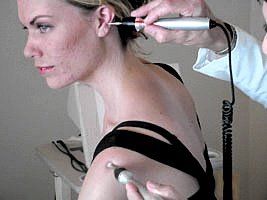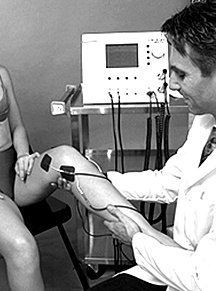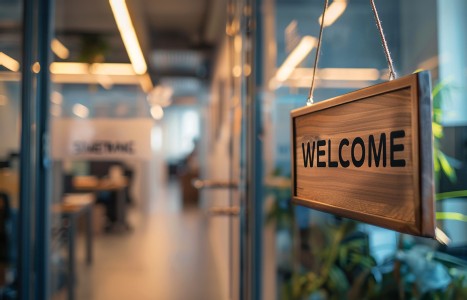As modern medical standardization continues, the field of traditional Chinese medicine has the advantage of comprehensive personalization. For rare or complex cases, deeper consideration of constitution is invaluable. Proper constitutional assessment, especially with first-time clients, can guide desirable and predictable outcomes. This leads to a higher rate of return, and greater trust between you and your patient.
Five Clinical Secrets for Superior Results With Hard-to-Treat Patients: Part One
We all have them - those patients who come into your office and say something along the lines of, "You're my last resort."
Let's be real here. No one is going to help every patient every time. There are many reasons for that, including unfinished lessons the patient needs to work on that they are not yet ready to move past. There is also a matching of personalities and treatment styles between patients and practitioners that is often an important factor. There are just some patients that your colleague will get through to better than you will. But in most cases, each of us can increase our understanding and skills to help way more of those hard-to-treat patients.
This article is about five clinical principles that utilize laws of energy medicine. Some of these techniques will no doubt already be familiar to you, but few acupuncturists I have met utilize all of these.
Why do I call these techniques "secrets"? Here's why: There are probably hundreds of health care educational institutions teaching electrotherapy and light therapies to chiropractors, acupuncturists, physical therapists, MDs and sports medicine docs. Yet few, if any, offer even a small part of this information! Although what you read here may sound relatively simple (because it is), it has taken me decades of intensive study and clinical experimentation to assemble what you have in this report. I hope you will take advantage of it.
Treating in Accordance With the Universal Laws of Energy
What are universal laws? These are the ways that the physical and energetic universe operates. This is the kind of knowledge that physicists have been observing and studying for centuries. Some universal laws, such as the law of attraction popularized in the recent smash movie "The Secret" and numerous other books and films, are about how the mind works and are off the radar screen of classical physics.
This article is about simple ways that you can make practical use of four powerful universal laws - the law of resonance, the law of correspondence (as above, so below), the law of polarity, and the law of "less is more" - in clinical practice to supercharge your results. Here are some clinical applications of these universal laws:
The Law of Resonance: Applying an electrical or sound frequency or wavelength of light that creates a positive healing reaction in the part of the body to be treated. Examples include: using orange light to boost thyroid function, using tuning forks of specific musical notes to treat acupuncture points, and using appropriate frequencies of microcurrent stimulation to relieve inflammation and balance specific organs.
The Law of Correspondence (As Above, So Below): See Clinical Method #1 below.
The Law of Polarity: All things in the physical universe are polarized. That is, they have a more positively charged aspect and a more negatively charged aspect. This also manifests in magnetic systems (like a magnet or the Earth) as a north pole and a south pole.
As the great acupuncture researcher Manaka taught, the most powerful forms of acupuncture involve applying positive and negative polarity agents to sets of master acupoints. He showed that doing this even for a few seconds can instantly change abdominal reaction patterns and pulse qualities and start to relieve patterns of pain and disease. I have adapted his research to the use of modern microcurrent stimulation, and found that the results are even faster than with the older methods.
The Law of "Less Is More": In the exploding field of light therapies for medical and esthetic applications, the prevailing doctrine is still that using highly intense forms of light, such as lasers and arrays of high-power LEDs, will provide the best results. Most practitioners using electrical stimulation, including most electro-acupuncture devices, also use milliamp stimulation currents that are strong enough to create nerve and muscle stimulation for pain relief and other applications. There are certainly appropriate uses of intense energy for surgical and quasi-surgical procedures and treatment of some acute injuries.
Yet when it comes to promoting actual healing, regeneration and lasting pain relief, the human body responds far better to gentler, subtle energy stimulation. This is what we are wired to communicate with and respond to. Clinical applications include gentle light sources, microcurrent stimulation and even simply directing energy through the power of positive intention. These support the body in healing itself, rather than blasting it with overly high levels of energy.
Many knowledgeable people call this form of subtle energy treatment "informational therapy," because it is providing correct, coherent information that summons the body's healing resources using its own internal energies. This is distinct from higher-intensity energy therapies that use externally applied currents and light to drive physiologic changes.
Let's now look at the five clinical methods into which you can tap to get superior results with your patients. Each of these methods utilizes one or more of the universal laws just explained above. For each method, I will present one specific application using simple, low-tech methods and one application using my specialty of microcurrent and color light electro-acupuncture.
Clinical Method #1: The universe and the human body are holographic
To put it simply, this means that each part of our bodies contains an image of the whole body. In effect, there are countless "maps" on the body that allow a knowledgeable practitioner to access any painful or diseased aspect. Such holographic maps exist on the ears, hands, feet, face and probably everywhere else.
The secret here is that treating remotely through these holographic nexus points is usually far more effective than only "zapping it where it hurts." "Circling the Dragon" is a time-honored acupuncture technique that involves surrounding a painful zone with a dispersion of needles. A similar technique can also be performed with a non-needle microcurrent, electro-acupuncture probe technique.
Low-Tech Method: Obtain charts of auricular (ear) points, Korean hand points, foot reflexology or Oriental face reading. Simply apply acupuncture or acupressure to points that correspond to a painful body area.
For example, if a client has pain in the shoulder, you can use your fingernail or a blunt object to rub the shoulder area of the ear.
Microcurrent Electro-Acupuncture Method: One of my favorite methods of holographic pain control is creating polarized circuits between the affected body area and a corresponding holographic point or points (Figure 1). Combining two or more forms of energy stimulation greatly amplifies the results (such as combining microcurrent and color light, or light and healing sound). Here is an example of using this method for relief of shoulder pain, with the positively charged probe on the painful shoulder and the negative probe on the shoulder holographic point of the ear. This is clear application of the universal law of polarity.

Clinical Method #2: Don't just do one thing - mix it up
Throughout our evolution, we have developed elaborate ways to avoid being fried by the soup of electromagnetic energies flooding our planet, which are more prevalent in modern times. This is why the human body "accommodates," or tunes out, most forms of energy stimulation, including most electrotherapy, light therapies and extended acupuncture needle placements ... as well as boring lecturers. I have found that treating patients with a series of brief pain-controlling techniques is usually far superior to just doing one technique.
Examples include the following:
Low-Tech Method: Combine some form of acupuncture point stimulation (needles, microcurrent, acupressure, light, etc.) with instruction to the patient to do deep breathing, visualize a positive outcome or a simultaneous exercise. (See the next method for more about that.) The body "unwinds" its deeply held pain and dysfunction patterns better using this form of a combined approach.
Microcurrent Electro-Acupuncture Method: Superior results can come from using a sequence of brief, powerful probe and pad techniques of about 1 to 3 minutes each, and testing the patient's reaction after each step. This way you don't overtreat, and you quickly find out exactly what is working and what is not working.
My favorite sequence of microcurrent techniques is: Circling the Dragon (local dispersion of pain), polarized local distal stimulation (like placing the positive probe on the low back and the negative probe on a distal point such as K 3), and stimulation of holographic microsystem points, followed by interferential pad placements with simultaneous exercise. The great part? All of that can be completed in 10 to 15 minutes or less.
Clinical Method #3: Get them off the table

Yes, it's convenient and normal to have a patient lie on a treatment table during a therapeutic treatment. This is appropriate for many types of treatments involving acute injuries or internal conditions. But you can often produce far more dramatic results for less acute pain and injury patients by getting them off the table and in motion, especially if you get them exercising or stretching while receiving simultaneous gentle energy stimulation. This can help reset the deep proprioceptors, thereby accelerating pain and injury rehabilitation.
Low-Tech Method: Use any kind of electronic point stimulator, light pen or laser, or even digital acupressure on active trigger points, or needle distal acupoints that are on the meridians running through the painful area. Have the patient move the painful area through its range of motion, challenging the painful limits of ROM from different directions while you stimulate the distal point. You will probably see the patient's range of motion in the painful area improve.
Microcurrent Electro-Acupuncture Method: Place interferential microcurrent pad placements around the affected area, turn on the current, and either instruct the patient to do exercise and ROM work, or do it for them, as shown in Figure 2. This is a very powerful and effective method to accelerate rehabilitation after surgery or injury.
Interferential electrotherapies mix two out-of-phase frequencies through two sets of pad electrodes in an affected body area, thus creating an interference field. Interference fields contain many additional harmonic frequencies and penetrate deeper into the joint than conventional electro-stimulation currents.
Editor's Note: Part 2 of this article is scheduled to appear in the October issue of AT.



